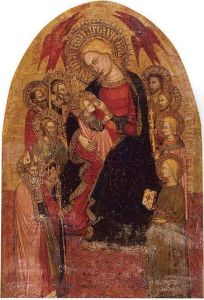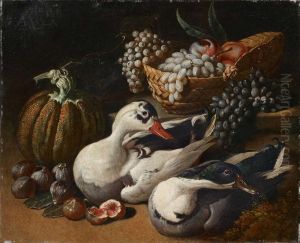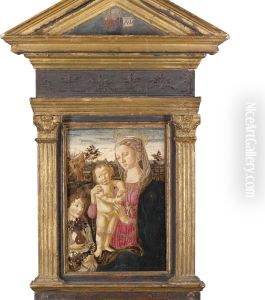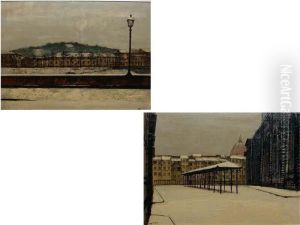Jacopo Da Firenze Paintings
Jacopo da Firenze, also known as Jacobus de Florentia or Jacopo di Casentino, was an Italian composer and music theorist who lived during the Middle Ages. He is believed to have been born around 1320, although the exact date and place of his birth are not well documented. Little is known about his early life or training, but his contributions to the development of music theory and notation during the 14th century are considered significant.
Jacopo da Firenze's activities are primarily known through his work on a treatise called 'Tractatus de musica,' which is an extensive compilation of musical knowledge of the time. This treatise provides valuable insights into the practice of polyphony and the theoretical understanding of music in the Italian Trecento, a period of flourishing artistic and cultural development in Italy.
His treatise is one of the earliest known to have been written by an Italian on the subject of music theory and it includes discussions on various aspects of music, such as notation, rhythm, intervals, modes, and the principles of counterpoint. Jacopo da Firenze's work was influential in disseminating the ars nova (new art) musical style that originated in France and spread throughout Europe. The ars nova was characterized by increased rhythmic and notational complexity, and Jacopo's treatise helped in its adoption in Italy.
Despite the significance of his theoretical work, there are few surviving compositions attributed to Jacopo da Firenze, which makes it difficult to fully assess his impact as a composer. The lack of biographical information makes it impossible to trace his career or influence with precision, and the date and circumstances of his death remain unknown. However, his contributions to music theory during a pivotal time in the history of Western music make him an important figure in the study of medieval music.



